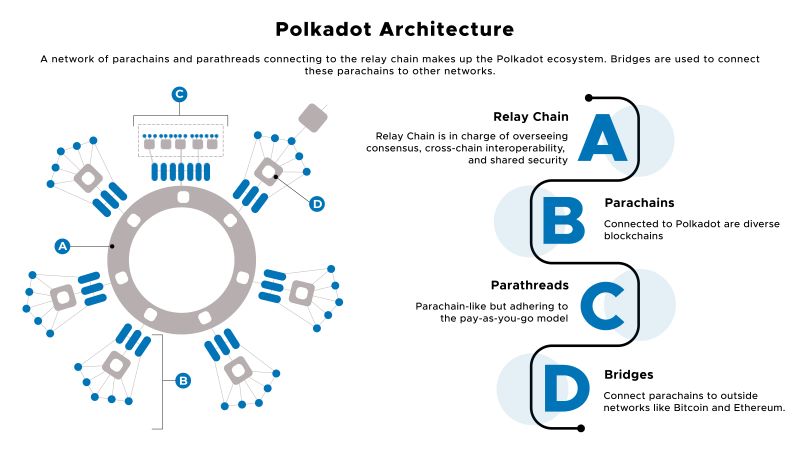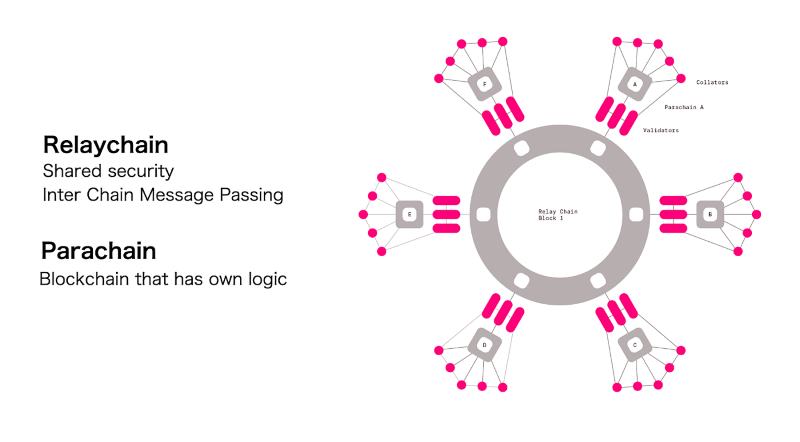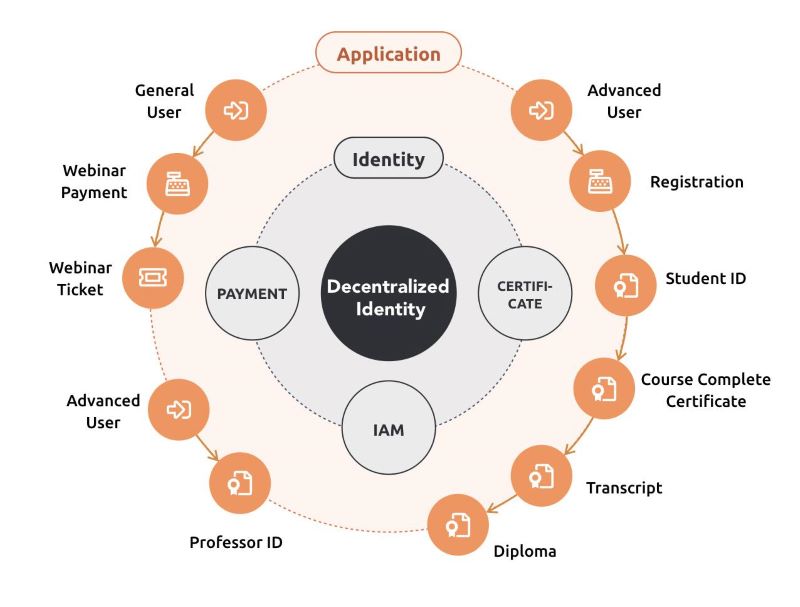Categories: Blockchain
Breaking Barriers: The Impact of Polkadot Interoperability on Blockchain
Polkadot interoperability revolutionizes blockchain by enabling seamless communication between different networks. This integration enhances scalability, efficiency, and user experiences, making blockchain technology more versatile and widely applicable across various industries.
The blockchain revolution has brought about significant changes in various industries, promising a decentralized and transparent future. However, the fragmented landscape of different blockchains has presented a challenge to fully harness the potential of this revolutionary technology. Enter Polkadot – a project aiming to bridge the interoperability gap between blockchains, paving the way for a more connected and efficient ecosystem. In this article, we will explore the concept of Polkadot interoperability and its impact on the blockchain industry.
Table of Contents
Polkadot Interoperability
Polkadot is a next-generation blockchain protocol that enables cross-chain communication, or interoperability, among different blockchains. Its main goal is to create a unified, interconnected network of blockchains, allowing them to communicate and transfer data and value seamlessly. This interoperability is achieved through a unique architecture called a "multi-chain network."

What is Polkadot?
Polkadot was founded by Dr. Gavin Wood, one of the co-founders of Ethereum, with the vision of creating a "network of networks." It is developed by the Web3 Foundation, a non-profit organization dedicated to advancing the development and adoption of decentralized web technologies. The project raised over $140 million during its initial coin offering (ICO) in 2017 and has gained significant traction since then.
At its core, Polkadot is a sharded multichain network, which essentially means that it comprises multiple parallel blockchains, called parachains, running in parallel under one umbrella. These parachains are connected to a central relay chain that acts as the backbone of the network, facilitating communication and coordination between them.
How does Polkadot achieve interoperability?
One of the key aspects of Polkadot's architecture that enables interoperability is the use of a common set of protocols and standards. By using the same set of rules, different parachains can communicate with each other seamlessly. This eliminates the need for any intermediary or third-party service providers, reducing the risk of centralization and single points of failure.

Another crucial aspect of Polkadot's interoperability is its shared security model. Unlike other blockchains that have their own individual security mechanisms, Polkadot's relay chain provides a unified security layer for all parachains. This shared security not only increases the overall network's resilience but also makes it more cost-effective for developers to build on Polkadot.
Blockchain Interoperability: Challenges and Limitations
Before we delve further into the impact of Polkadot interoperability, let us first understand the challenges and limitations posed by the fragmented blockchain landscape.
Limited Functionality
As mentioned earlier, each blockchain has its own unique set of functionalities and features. However, this also means that these blockchains remain siloed, unable to interact with each other seamlessly. For instance, a decentralized finance (DeFi) platform built on Ethereum cannot easily access the assets and functionality of another blockchain like Bitcoin or EOS.
This limitation hinders the development of comprehensive applications that could utilize the strengths of multiple blockchains. It also restricts the transfer of value between different chains, limiting their potential for real-world use cases.
Reduced Scalability
The scalability issue has always been a major challenge for blockchain technology. As more transactions are added to the network, the time and resources required to validate these transactions increase. This leads to slower transaction times and higher fees, hindering mass adoption.
In a fragmented landscape, where each blockchain operates independently, this issue is compounded. Each blockchain has its own capacity limits, and as more users and transactions are added, the network becomes congested, leading to delays and higher costs.
Lack of Interoperable Data Exchange
Blockchain interoperability not only includes the transfer of value but also the exchange of data. However, in the current fragmented landscape, there is no standardized way to exchange data between different blockchains. This poses a significant challenge for developers looking to create applications that require data from multiple sources.
The Impact of Polkadot Interoperability
Polkadot's interoperability solution could potentially address these challenges and limitations, unlocking a plethora of opportunities for blockchain technology. Let us explore how Polkadot's interoperability could impact the industry.

Enhanced Functionality and Use Cases
By enabling cross-chain communication, Polkadot opens up a whole new world of possibilities for developers. They can now build applications that leverage the strengths of multiple blockchains, creating comprehensive and feature-rich solutions. These applications can also easily access assets and data from different chains, making them more versatile and efficient.
For instance, a DeFi platform on Polkadot can access liquidity from both Ethereum and Bitcoin, providing more options for users. Similarly, a supply chain management platform can utilize data from different blockchains, ensuring transparency, traceability, and efficiency in their operations.
Improved Scalability and Cost-effectiveness
As mentioned earlier, Polkadot's shared security model and sharded architecture allow for better scalability and cost-efficiency. With a unified security layer, the network can handle a higher transaction volume without compromising on security. Additionally, the parallel processing of transactions on different parachains in Polkadot's sharded network allows for faster transaction times and lower fees compared to traditional blockchains.
This improved scalability and cost-effectiveness make Polkadot an attractive option for developers and businesses looking to build solutions on blockchain technology.
Seamless Data Exchange
One of the most significant impacts of Polkadot interoperability is its ability to facilitate data exchange between different chains. By using a common set of protocols and standards, developers can easily integrate data from various blockchains into their applications. This not only makes it easier to create comprehensive applications but also enables the development of data-driven solutions that can leverage the vast amount of information stored on different chains.
Use Cases for Polkadot Interoperability
The potential use cases for Polkadot interoperability are vast and varied. Some of the most promising ones include:
Cross-chain DeFi Solutions
DeFi has been one of the fastest-growing sectors in the blockchain industry, but its potential has been limited by the siloed nature of blockchains. With Polkadot's cross-chain communication capabilities, developers can create more comprehensive and versatile DeFi platforms that can access assets from multiple blockchains, making them more efficient and attractive to users.

Supply Chain Management
Supply chain management is another sector that could benefit greatly from Polkadot's interoperability. By connecting different blockchains, supply chain stakeholders can track and verify the authenticity and movement of goods across different stages, making the process more transparent and efficient.

Decentralized Identity Solutions
Decentralized identity solutions aim to give individuals control over their personal information and protect them from data breaches and identity theft. However, these solutions require access to various forms of data, which are currently scattered across different blockchains. By using Polkadot interoperability, decentralized identity solutions can easily access this data, providing a more robust and secure way to manage digital identities.

Polkadot's interoperability solution has the potential to transform the blockchain industry by addressing the challenges posed by a fragmented landscape. Its sharded architecture, shared security model, and common protocols and standards enable seamless communication between different blockchains, paving the way for new and innovative use cases. As the project continues to develop and gain traction, we can expect to see a more interconnected and efficient blockchain ecosystem, unlocking the full potential of this revolutionary technology.
Polkadot's interoperability is not just a technological advancement but a revolution in how we perceive and utilize blockchain. By breaking down barriers between different blockchain networks, Polkadot has ushered in a new era of collaboration, innovation, and scalability.
With Polkadot's immense potential, the future of blockchain is becoming more open than ever before. Polkadot interoperability ensures that decentralized applications (dApps) are no longer confined to a single network but can harness the combined strength of multiple blockchains. This promises better, more efficient, and diverse user experiences. Polkadot represents not just a technological solution but a vision of a future where blockchain is truly decentralized, flexible, and highly adaptable. This marks a significant step toward making blockchain technology more widely applicable and transforming how we interact with the digital world. Follow U2U Network to update the latest information about Blockchain
.png)